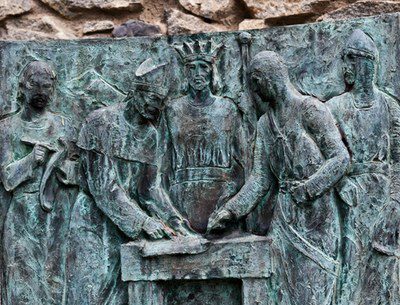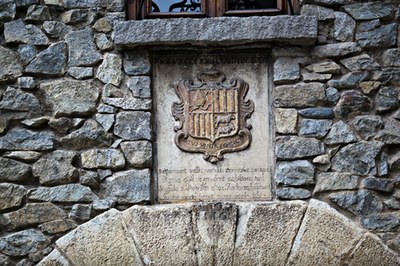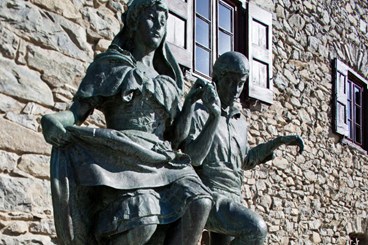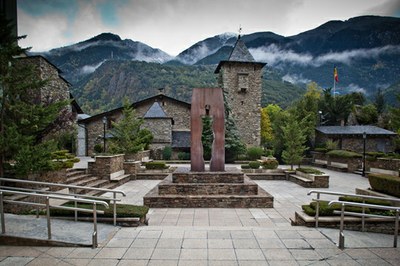A House with history
Situated in the centre of Andorra la Vella, the Casa de la Vall is a central point worth visiting in order to understand the remarkable history and solid institutional basis of the Principality of Andorra.
It is a noble building dating from the late 16th century. In 1702 it became the seat of one of the oldest and most continuous parliaments in Europe, the “Consell General”, first created in 1419. The house is open to the public with guided tours in several languages.
A historic building
Over the main doorway is a shield which bears the date 1580. Built on a rock which dominated the whole of the River Valira valley, the house belonged to the Busquet family. Antoni Busquets, who was vicar of Andorra la Vella, had it built, as is recorded in his will dated 1603. The structure now is the same as it was in the 16th century, but the building has been through a number of changes, the most important being in 1962.
A house for everyone
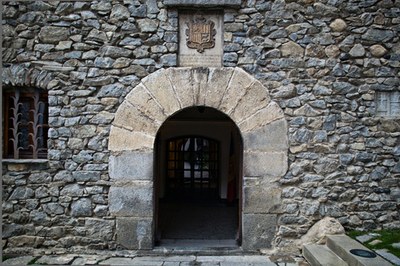 |
|---|
| Front door |
In December 1701, the Consell General bought the Casa de la Vall and moved into it in the following year. The building was not only a place for meetings and a focus point for the representatives of the parishes – the Andorran territorial divisions, where they dealt with matters affecting the territory of the valleys, but was also used as a seat of justice, as we read in the inscription of the shield over the main door, “... Iustitia sedes”.
All the functions of the Andorran government, administration and justice took place in the same building. The needs of growth meant that other premises had to be used and led to the building in 2011 of a new home for the parliamentary institution.
The gardens, a stroll through time
In front of the building, where the rocky cliff hung over the valley, an open area was created in the 2011 project for the new parliamentary building, allowing a clear view of the old house and offering a splendid vista over the valleys. On the façade, at the sides and behind the building are dates and sculptures commemorating significant moments of Andorra.
|
1278Monument to the 7th centenary of the “Pariatges”The Pariatge is the document which was signed by the Count of Foix, Roger Bernat III, and the Bishop of Urgell, Pere d’Urg, to put an end to the hostilities rampant at that time. Through it they decided that they would have a system of co-lordship in Andorra: each year, alternately, one of them would collect taxes from their subjects, the Andorrans, and thus maintain eternal peace. It is considered as the founding document of a regime which is unique today, the co-principality. |
1580
Busquets family shield on the door of the building
You can read the date of the building. A small part was cut off in the 18th century, in fact in order to make room for the Andorran shield. From the door we can see, high up, a dovecote which formed an integral part of the house.
|
1702Traditional shield on the door“Virtus, Unita, Fortior” is the motto of Andorra. A translation would be: virtue united is stronger. The Consell General brings together representatives from the various valleys forming Andorra. In 1702 it took up occupation of the building. |
|
1866Monument to the first centenary of the New ReformIn front of the building, facing the valley, dancers perform the traditional Andorran “contrapàs” in homage to the New Reform which took place in 1866, involving the reorganisation of the Consell General and giving all male heads of houses the right to vote and stand for election. |
|
1993Monument to the men and women of Andorra who launched the ConstitutionIn the referendum held on 14 March 1993 the Andorran citizenry expressed their will to become a constitutional state, democratic and social, as expressed in article 1 of the Constitution. In the garden behind the building stands this monument, by the winner of the competition organised by the Consell General to commemorate this date. |

